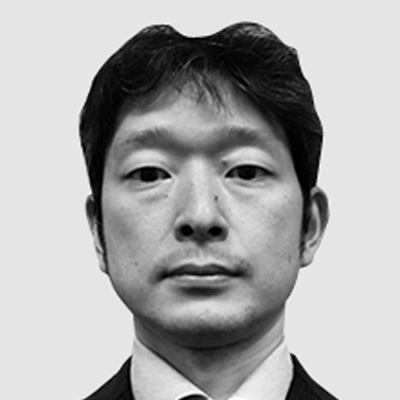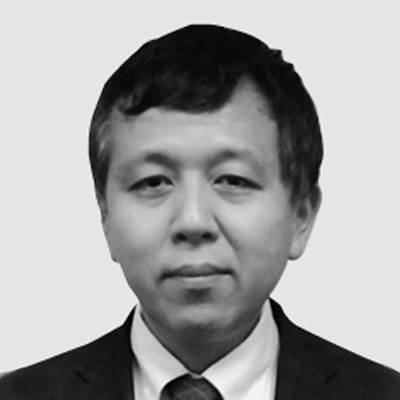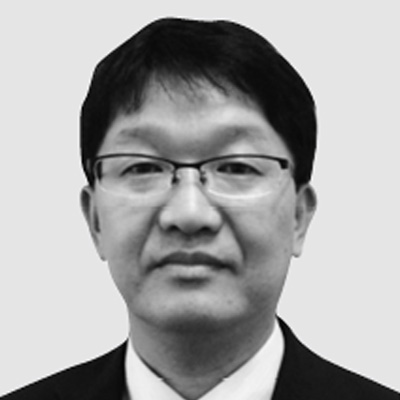Technological Innovations Accelerating Worldwide Digitalization
The shift from conventional electric power systems based on large-scale power sources to new systems including expanded integration of renewable energy sources, diversification, digitalization, electrification, and motorization is advancing rapidly. While considering the situation both inside and outside Japan, Hitachi is addressing the technical challenges related to energy systems that support Society 5.0, especially the future of electric power systems, and promoting recommendations on policy and institutional issues. This article introduces the analysis technology and framework required for an evaluation platform that allows the open transmission and sharing of quantitative and objective information required for discussing and sharing a vision for energy systems across the society.

Center for Technology Innovation – Energy, Research & Development Group, Hitachi, Ltd. Current work and research: Research and development of energy solutions. Society memberships: The Institute of Electrical Engineers of Japan (IEEJ).

Center for Technology Innovation – Energy, Research & Development Group, Hitachi, Ltd. Current work and research: Research and development of energy solutions. Society memberships: IEEJ and the IEEE.

Planning & Strategy Division, New Age Energy Business Co-create Division, Hitachi, Ltd. Current work and research: Business planning for co-creation of energy solutions.

Center for Technology Innovation – Systems Engineering, Research & Development Group, Hitachi, Ltd. Current work and research: Development of city solutions for the demand side. Certifications: P.E.Jp (Professional Engineer, Japan). Society memberships: The Architectural Institute of Japan (AIJ), the Society of Polymer Science, Japan (SPSJ), the Japan Society of Applied Physics (JSAP), and the Chemical Society of Japan (CSJ).

Planning & Strategy Division, New Age Energy Business Co-create Division, Hitachi, Ltd. Current work and research: Business planning for co-creation of energy solutions.
Large-scale integration of renewable energy sources, development of information and communication technology (ICT), globalization, changes in people's values, and other factors in recent years have led to drastic changes in economic and social frameworks and industrial structures. The Japanese government has announced its “Society 5.0” program to create new values meeting such economic and social changes, to share a future vision toward a super smart society that will bring about a good life, and to solve social challenges ahead of the rest of the world. Hitachi is promoting recommendations for future energy systems that support this Society 5.0.
In June 2016, Hitachi, together with The University of Tokyo, established Hitachi-UTokyo Laboratory as a new scheme for collaborative creation between industry and academia. Through this laboratory, Hitachi identifies technical, policy and institutional issues in the rapid shift to new systems including expanding integration of renewable energy sources, diversification, digitalization, electrification, and motorization, and while endeavoring to share these issues with stakeholders, the company will publish its proposals(1).
Figure 1—Overview of Energy Systems Supporting Society 5.0 Energy systems unique to each local community coexist with the bulk power systems that connect them.
Energy systems unique to each local community coexist with the bulk power systems that connect them.
In Society 5.0, individuals will play the central roles in daily living, and energy systems unique to each local community will be developed. Moving from the uniform centralized concept that is premised on scale expansion that has been used to date, Hitachi aims to create a world in which the imagination of people in all regions is leveraged to solve a multitude of energy issues and create new value.
Along with drastic changes in economic, social, and industrial structures, mutual linkage and coordination among various infrastructures, and the construction of energy systems suitable for the respective local communities are required. However, it will be difficult to close off the exchange of energy supply-demand and value in one local community due to uneven regional distribution and temporal fluctuations brought about by the integration of renewable energy. The bulk power system, therefore, will have to fill the role of connecting multiple local communities and coordinating the entire system. Under these circumstances, the local communities' energy systems and bulk power systems will no longer play standardized roles, they will have to be rebuilt on the premise of coexistence (see Figure 1).
To achieve this vision, an array of diverse technological options will need to be prepared. In particular, the output fluctuations from photovoltaic and wind power generation, etc. will have a large impact on the power grid. The International Energy Agency (IEA) divides the introduction rate into four phases (up to 5% / up to 10% / up to 30% / 30% and over) and advocates that both hardware and software measures be incorporated at each stage(2). For example, in Ireland, the percentage of renewable energy is expected to reach 40% by 2020, making it possible to momentarily meet three-quarters of the electricity demand with renewable energy. To that end, techniques for fine adjustments in renewable energy output, storage, and demand are being developed.
Individuals will play the main roles in daily living and energy systems unique to each local community will be developed. Energy systems need to be restructured to be suitable for local communities given that not only electricity, gas, and water, but ICT, automobiles, logistics, and other infrastructure will support their daily living in a cooperative and collaborated manner. The values concerning energy used by individuals will be diversified into values based on environmental friendliness, including CO2 reduction and local resource preservation, as well as convenience and comfort in daily living. Along with the shift from energy consumption to service utilization, energy distribution with service quality will be realized that meets the level required by the respective regions.
Furthermore, as the ratio of distributed power sources such as variable renewable energy (VRE) increases, values concerning electricity will be measured not only in terms of energy quantity represented by kWh, but also in terms of contribution to the total supply capacity of electricity systems represented by kW, supply-demand adjustments in response to short-term changes represented by ∆kW(h), and other coordination capabilities to support the quality of electricity supplied by the entire power system. In local communities where there is a shift occurring from energy consumption to service utilization, these new values must also be incorporated into distribution and trading infrastructures and systems.
As energy systems change, bulk power systems are assuming important roles for improving the energy security, economic efficiency, environment, and safety (3E+S) of society as a whole. The supply and demand of energy and the exchange of values are transferred among multiple local communities, and bulk power systems assume the roles of connecting these together. Furthermore, conventionally, vertically integrated regional power companies ensure not only kWh-based output, but also other values such as stable supply and environment friendliness. When power transmission and distribution are separated, the energy system as a whole will have to ensure these values with quantification and benchmarking.
Under these circumstances, the local communities' energy systems and bulk power systems will no longer play standardized roles, they will need to be restructured on the premise of coexistence. Presently, bulk power systems play the role of controlling entire power grids. In the future, however, an increasing number of local communities will have their own power systems with renewable energy and dispersion-type power sources to produce and consume power locally and thereby to improve their resiliency. Bulk power systems will also utilize the coordination capabilities provided by local communities, thereby realizing a society with 3E+S.
Constructing a group of energy systems unique to the respective local communities necessitates the redefinition of the division of roles played by bulk power systems, including redefinition of the systems and policies (social systems) as a means of implementing said power systems.
Hitachi is now developing a platform that can analyze and evaluate the entire energy system of society, with a focus on electricity, in order to fix the roles of local communities and bulk power systems.
To date, Hitachi has developed the wide-area stability simulator(3) for evaluating various initiatives toward the expanded introduction of renewable energy from technological and benefit perspectives. It helps consider the limit for the introduction of renewable energy and determine the required control over output upon the mass introduction of renewable energy while ensuring supply-demand balance and considering transient stability based on anticipated failures in various regions' systems. In Step 1, the assumed power demand, the amount of power generated from VRE, the characteristics of the power facility equipment, and the assumed incident details are entered into the simulator to formulate a supply and demand operation plan. In Step 2, the simulator formulates scenarios of grid stabilization measures. In Step 3, it evaluates transient stability to verify effects of the grid stabilization measures, and in Step 4, it performs economic and environmental evaluations (see Figure 2).
It calculates various evaluation indicators such as changes in annual power generation costs and CO2 emissions. As a case study, Hitachi has started studying eastern Japan's grid system using stability evaluation models (see Figure 3). Note that, as required analysis information of electric power grids and power generation equipment is not disclosed, this is substituted with approximate data estimated from mapping information, etc., and the standard system models of the Institute of Electrical Engineers of Japan.
Furthermore, future energy systems need to incorporate and implement new control technologies for digitally connecting bulk power systems with local communities and, concurrently, develop market trading systems and systemic designs.
For example, new control technologies — such as virtual power plants (VPPs), demand responses (DRs), and smart inverters for renewable energy — need to be developed. The existing systems' potentials should be effectively utilized to maximize the cost-effectiveness of the social system by having local communities' power control perform part of the supply-demand coordination function that is presently performed by thermal power and pumped-storage power generation facilities. To this end, it is important to develop IT infrastructures for linking local communities' enormous facilities, control schemes for maximizing their effects, incentives, and other rules.
Moreover, the maintenance of a system for the disclosure and publication of evaluation and analysis data is also essential. Using evaluation platforms, Hitachi will drive the development of digital cooperative technology for new control systems.
Figure 2—Overview of Wide-area Grid Stability Simulator Evaluate the feasibility and benefits of technology related to initiatives toward the expanded introduction of renewable energy. In addition to balancing supply and demand, calculates the limit of renewable energy introduction and the required amount of withheld power output assuming a scenario of transient stability attributable to regional grid faults. Evaluation indicators are annual power generation costs and amount of CO2 emissions.
Evaluate the feasibility and benefits of technology related to initiatives toward the expanded introduction of renewable energy. In addition to balancing supply and demand, calculates the limit of renewable energy introduction and the required amount of withheld power output assuming a scenario of transient stability attributable to regional grid faults. Evaluation indicators are annual power generation costs and amount of CO2 emissions.
Figure 3—Screenshot of Wide-area Grid Stability Simulator A tool that evaluates various initiatives toward the expanded introduction of renewable energy from technological and benefit perspectives. It helps consider the limit for the introduction of renewable energy and determine the required control over output upon the mass introduction of renewable energy while ensuring supply-demand balance and considering transient stability based on anticipated failures in various regions’ systems.
A tool that evaluates various initiatives toward the expanded introduction of renewable energy from technological and benefit perspectives. It helps consider the limit for the introduction of renewable energy and determine the required control over output upon the mass introduction of renewable energy while ensuring supply-demand balance and considering transient stability based on anticipated failures in various regions’ systems.
In the past, bulk power systems have increasingly contributed value to society through total optimization based on links with neighboring bulk power systems in wide-area operations.
In the future, they will deepen their links with power distributors and consumers and have complicated cross-industry links with mobility systems and other non-energy industries. Along with this trend, an evaluation environment will be developed and shared that will link individual simulation tools, incorporate real data, and develop into a cyber-physical system (CPS) enabling operations in cyberspaces. Moreover, it will evolve into an environment that can evaluate energy systems that support Society 5.0, and leverage that as a platform on which, together with a multitude of stakeholders, discussions can be had on solutions for tomorrow's world (see Figure 4).
Figure 4—Evolution of Energy Systems Evaluation Platform The horizontal axis represents the complication of systems, it proceeds from area systems to cooperation with wider area grids, area grids, and coexistence of systems with other industries. The vertical axis represents the evolution of customer values, which start from individual optimization and proceeds to economic improvement through overall optimization and industry creation. It is necessary to promote the construction of an environment that can be evaluated and operated in coordination with distributed resources on a very large-scale.
The horizontal axis represents the complication of systems, it proceeds from area systems to cooperation with wider area grids, area grids, and coexistence of systems with other industries. The vertical axis represents the evolution of customer values, which start from individual optimization and proceeds to economic improvement through overall optimization and industry creation. It is necessary to promote the construction of an environment that can be evaluated and operated in coordination with distributed resources on a very large-scale.
Political, economic, and technological uncertainties are increasing in the whole energy sector due to changes in the global situation concerning energy resources, diversification of market participants on a global level, and various potential technological innovations including electric vehicles (EVs), storage batteries, and hydrogen. In this age of uncertainty, a scenario analysis framework based on evidence-based policy making (EBPM) should be introduced, which to enable flexible decision-making.
As opposed to the prediction of a single outcome in the future, scenario analysis considers alternative multiple outcomes in the future to design energy systems and relevant approaches under each scenario. With highly uncertain economic environment and geopolitical risks as variables, it analyzes the impacts of such variables on the energy sector in multiple scenarios and helps prepare relevant approaches. In recent years, many governments and companies have introduced scenario analysis to prepare themselves for uncertainties, and it is an expanding trend.
In Japan, based on variables that have significant impacts on Japanese society, multiple scenarios concerning transitional approaches toward 2030 and then 2050 will be discussed with various stakeholders.
In Society 5.0, individuals will play the central roles in daily living. Energy systems unique to each local community will be developed. Data will play important roles. Not only electricity, but new values and services will be provided. Bulk power systems will play an important role in improving 3E+S across society as a whole. Local communities' and bulk power systems' roles will no longer be standardized, they will be restructured on the premise of coexistence. For the exponential increase in factors requiring collaboration and coordination, including distributed energy sources, linkage between bulk power systems and many local communities, and human behaviors, Hitachi will establish a new collaborative mechanism to integrate these distributed resources.